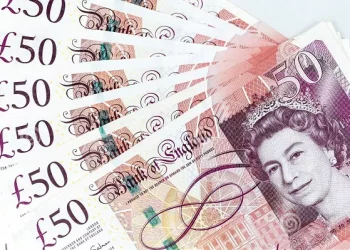The foreign exchange (Forex) market is an intricate and dynamic financial landscape where traders analyze and speculate on the values of global currencies. Among the various monetary units that have played a role in the currency history of different nations, the Öre stands as an intriguing subunit of currency, primarily associated with Sweden, Norway, and Denmark. While the Öre itself is not an independent currency, it has been historically used as a fractional denomination in several Nordic economies.
This article explores the Öre’s role in the past and present, Öre’s significance in currency markets, and its relevance to foreign exchange traders today. We will also examine how small denominations like the Öre influence currency valuations and trading strategies in the Forex market.
1. Understanding the Öre: A Historical Perspective
The Öre has its origins in Scandinavian monetary history and was widely used as a subunit of the Swedish, Norwegian, and Danish currencies. It has primarily been linked to the Swedish krona (SEK), Norwegian krone (NOK), and Danish krone (DKK).
The Öre in Sweden
The Swedish Öre (öre) was a subdivision of the Swedish krona (SEK). Before its complete phase-out in 2010, 1 krona was equal to 100 öre. The Swedish Riksbank (Sweden’s central bank) progressively reduced the circulation of Öre coins due to inflation, electronic transactions, and declining use.
Phase-out Timeline:
- The 1-öre coin was discontinued in 1971.
- The 2-öre and 5-öre coins were phased out in 1972.
- The 10-öre, 25-öre, and 50-öre coins remained until 1992.
- The last remaining 50-öre coin was officially discontinued in 2010.
Since then, Sweden has operated solely with whole kronor, and transactions are rounded accordingly.
The Öre in Norway
In Norway, the Öre was historically a subunit of the Norwegian krone (NOK). Similar to Sweden, the 1 NOK was divided into 100 øre. However, due to inflation and changing payment trends, the Norwegian government gradually phased out Öre coins, with the last 50-øre coin removed from circulation in 2012.
The Öre in Denmark
Denmark also used the øre as a subunit of the Danish krone (DKK), where 1 krone was equal to 100 øre. Over time, the øre coins were gradually withdrawn from circulation. The last circulating øre coin (50-øre) was abolished in 2008, effectively ending the use of the denomination in cash transactions.
2. Why Was the Öre Discontinued?
The Öre, like many other fractional currency units worldwide, faced the challenge of diminishing purchasing power due to inflation. Some key reasons for its discontinuation include:
- Inflation Erosion: Over time, the Öre’s value became too small to have practical significance in everyday transactions.
- Rise of Digital Payments: With the increasing use of credit cards, mobile payments, and online banking, the need for small-denomination coins diminished.
- Rounding Policies: Many retailers and businesses started rounding prices to the nearest whole krone, making Öre coins redundant.
- Production Costs: The cost of minting and distributing Öre coins often exceeded their actual monetary value, leading central banks to eliminate them.
3. Impact on Foreign Exchange Markets
Though the Öre itself is no longer in active circulation, the currencies it was associated with—SEK, NOK, and DKK—remain important players in the foreign exchange market.
Trading the Swedish Krona (SEK)
The Swedish krona (SEK) is a free-floating currency, meaning its exchange rate is determined by market supply and demand. Sweden, a member of the European Union (EU), has not adopted the euro (EUR), which makes the SEK an independent currency influenced by Swedish economic policies and global market trends.
Key factors affecting SEK trading:
- Swedish Riksbank monetary policy
- Trade relations with the EU
- Inflation rates and interest rate decisions
- Economic data releases such as GDP, employment, and industrial production
Trading the Norwegian Krone (NOK)
The Norwegian krone (NOK) is known for its correlation with oil prices due to Norway’s status as a major oil-exporting nation.
Key factors affecting NOK trading:
- Brent crude oil prices
- Norges Bank interest rate policies
- Global risk sentiment and capital flows
- Economic indicators, including inflation and GDP growth
Trading the Danish Krone (DKK)
Denmark follows a unique fixed exchange rate policy, where the Danish krone (DKK) is pegged to the euro (EUR) under the European Exchange Rate Mechanism (ERM II). This means the Danish central bank intervenes to keep the DKK stable relative to the EUR.
Key factors affecting DKK trading:
- European Central Bank (ECB) policies
- Danish National Bank’s currency interventions
- Trade relations within the EU
4. The Öre’s Relevance to Forex Trading Today
Although the Öre is no longer in circulation, understanding its history helps traders comprehend the monetary evolution of the Scandinavian economies. Here’s why this knowledge is useful in Forex trading:
- Inflation and Currency Valuation: The phase-out of small denominations like the Öre reflects long-term inflation trends, which impact currency strength.
- Central Bank Policies: Historical changes in currency structures often indicate how central banks manage monetary policies. Traders watch such trends to predict future moves.
- Scandinavian Currency Trends: The discontinuation of Öre coins showcases the shift toward digital payments, affecting liquidity and Forex transaction strategies.
Conclusion
The Öre, once a common subunit of Nordic currencies, has been phased out due to inflation, economic modernization, and digital transactions. While no longer in circulation, its historical importance sheds light on the evolution of Scandinavian economies and their monetary policies.
For Forex traders, understanding the Öre’s past provides valuable insights into the dynamics of the Swedish krona (SEK), Norwegian krone (NOK), and Danish krone (DKK). These currencies remain significant in global currency markets, driven by central bank policies, economic performance, and external factors such as oil prices and EU trade relations.
In the fast-moving Forex market, even seemingly minor historical details—like the phase-out of the Öre—can offer important lessons for currency valuation and trading strategies. As technology continues to reshape monetary systems, keeping an eye on digital payment trends and central bank policies will remain crucial for traders navigating the evolving foreign exchange landscape.
Related Topics:



























